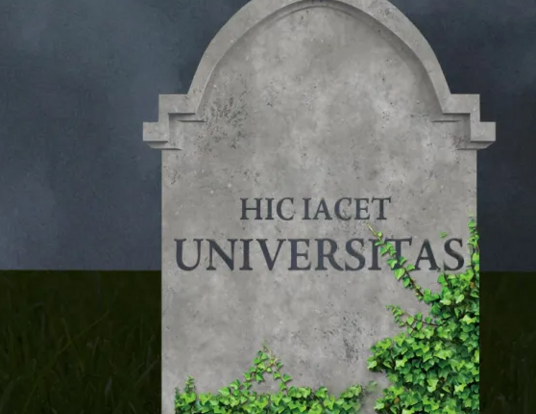Debt or Alive
How mortgage forbearance helped revive the US economy after COVID-19

In 1997, the Asian financial crisis turned Sean Lee’s life upside down. Suddenly, his family moved from their comfortable home in Seoul, South Korea, to a distant—and less prosperous—city. Lee was unhappy. He hated his new school. Most of all, he was confused. What had caused his family to uproot so abruptly?
Flash forward years later. Lee was taking the monetary economics course required of all students at the Wharton School of the University of Pennsylvania. As part of the coursework, he and a couple of his classmates chose to give a presentation on the Asian crisis. Gradually, things began to click.
“My dad traded raw materials on the international market,” he says. “The Asian crisis was a currency crisis. The exchange rate for Korean currency plummeted. So, the assets my dad was buying from countries that weren’t affected suddenly got much more expensive, which must have had a severe impact on his business. That’s why we had to move.”
Today, Lee, a PhD candidate at the Harvard Griffin Graduate School of Arts and Sciences (GSAS) who studies finance and macroeconomics, analyzes the complex currents of economic recovery and household finance in the wake of another crisis: the COVID-19 pandemic. His work casts a spotlight on the profound impact that debt relief had on the US macro economy—as well as the surprising realities of credit card debt in American households.
Forbear Us Our Debts
Lee looked at the Coronavirus Aid, Relief, and Economic Security (CARES) Act, a $2 trillion stimulus bill passed by Congress in March 2020 to stabilize an economy rocked by the onset of the COVID-19 pandemic. One piece of the legislation was a forbearance program that allowed borrowers to temporarily suspend their monthly mortgage payments.
“Following the Great Recession of 2007 to 2009, household liquidity was shown to be a key driver of consumer defaults and economic instability,” explains Jeffrey Miron, senior lecturer on economics and director of undergraduate studies at Harvard's Department of Economics. “Learning from this lesson, the mortgage forbearance program in the 2020 CARES Act was an attempt to boost households' short-term liquidity without affecting their long-term debt obligations during the pandemic recession.”

Applicants accessed the program through their loan servicers. Some firms made the process easy: make a phone call, click a button on a website. Others, not so much. “According to the Consumer Financial Protection Bureau’s complaint database, [some company representatives] didn’t pick up the phone,” Lee says. “They didn’t have a well-established website. There were some instances when borrowers waited up to 12 hours on a call and no one answered.”
Lee refers to the difficulty some had in accessing the forbearance program as “intermediation friction,” and he found no complete explanations for it—whether a servicer’s level of liquidity or the financial circumstances of their borrowers. “Even controlling for a wide variety of observable characteristics, the differences still remained,” Lee says. “Some borrowers just faced more difficulty in getting debt relief.”
To gauge the impact of mortgage forbearance on the US economy, Lee looked at loan servicers, their level of friction in administering the CARES program, and their geographical distribution. His research showed that the labor market recovered more quickly in regions where more borrowers were able to access the forbearance program. Specifically, Lee found that if you took an average region and, keeping other conditions constant, increased the forbearance rate by 1 percentage point, monthly employment would grow 30 basis points faster than it would have if the rate had stayed the same. His conclusion? “Mortgage forbearance is a remarkably cost-effective policy tool for macroeconomic stabilization in times of crises,” he says. " When people have more liquidity, they have more money to spend. And when they spend more, it shows up in someone else’s paycheck, and then that person spends, and so on. With the CARES Act’s forbearance program, there was a multiplier effect that led to a faster recovery of the labor market. Over a year, it was significant: about 3 to 3.5 percent faster employment growth.”
[Sean] has shown that improving household liquidity with mortgage forbearance provides a low-cost way of stimulating consumption because the program is essentially a large intertemporal liquidity transfer and not a large wealth transfer.
-Professor David Laibson
David Laibson, Harvard’s Robert I. Goldman Professor of Economics, is Lee’s faculty advisor. He calls his student’s research “path-breaking” and says it reveals important linkages between fiscal policy and household behavior.
“Sean’s work uses carefully designed empirical studies and economic modeling to identify the types of fiscal policy that most cost-effectively stimulate an economy that is contracting,” Laibson says. "In particular, he has shown that improving household liquidity with mortgage forbearance provides a low-cost way of stimulating consumption because the program is essentially a large intertemporal liquidity transfer and not a large wealth transfer.”
Crediting Present Bias
Lee has also turned his attention to a longstanding discrepancy between economic models and the reality of credit card debt. He points out that most standard macroeconomic models either ignore this type of borrowing or ascribe it to only 15 or 20 percent of consumers. The Survey of Consumer Finances reports, however, that 50 to 60 percent of US households carry revolving credit card debt—that is, they don’t pay off their balance each month, essentially borrowing the remainder at often confiscatory interest rates.
"It's important to keep track of how indebted US households are in thinking about the susceptibility of our macro economy to recession and other shocks," he says. "But the traditional macro model that both the academics and the policymakers use to assess those kinds of concerns does not adequately account for credit card debt."
As Lee crunched the numbers, a quandary emerged. Many households with revolving credit card debt—ones that also spent a large fraction of the additional income they received from fiscal policies like the stimulus checks from the 2020 CARES Act—simultaneously accumulate significant levels of wealth.
“Many are homeowners,” Lee says. “Or they have a significant amount of money in their retirement account. Or maybe they have stocks, collectibles, or other assets. But this wealth is typically illiquid—it can’t easily be converted into cash. So, when they are liquidity-constrained, they use their credit cards for consumption.”
The traditional macro model that both the academics and the policymakers use . . . does not adequately account for credit card debt.
-Sean Lee
But why would someone sink $1,000 into, say, a brokerage account that yields 5 percent a year and then finance the purchase of a $1,000 refrigerator with a credit card that charges an 18 percent annual interest rate? Lee’s answer is present bias—the tendency to value immediate rewards over long-term benefits.
“People are actually patient when it comes to long-term preferences,” Lee explains. “They optimize their welfare. They put a lot of money in a retirement account or spend a big chunk of their income on a home—both of which are good long-term investments. But that puts a lot of pressure on the liquid wealth that they use for consumption. They become impatient in the short term and take on these huge borrowing costs to get what they want now. That’s the unique prediction of present bias.”
Laibson says Lee’s work provides an insightful analysis of the financial behavior of present-biased households.
“Sean identifies which households have a particularly high propensity to consume out of liquidity: those households with high levels of present bias,” he says. “This explains why a majority of households carry high-cost credit card debt.”
Critical Input
Lee’s research has implications for fiscal policymakers. Current economic models argue that during an economic downturn, stimulus should be targeted and relatively small because households will only spend so much before they start to put money in savings, where it does less to stimulate a flagging economy. Lee’s research changes these assumptions.
“When people get a stimulus check, the first thing they will do is pay off their credit card debt,” he says. “If they don’t have to make credit card payments anymore, it will already bring them to a higher level of consumption. But, in addition to that, they will still spend a large portion of the remainder because they are still liquidity constrained.”
As Lee delves deeper into the interplay between household finance and macroeconomic stability, he continues to chart new territory, challenging assumptions and revealing hidden dynamics. While his work is not prescriptive, he says he hopes it gives policymakers the information they need to more effectively manage the ups and downs of the US economy.
“It’s important to understand how debt and present bias influence the ways that people respond to fiscal stimulus,” Lee says. “That’s a critical input for designing better policies and for lessening suffering during a downturn.”
Get the Latest Updates
Join Our Newsletter
Subscribe to Colloquy Podcast
Simplecast



